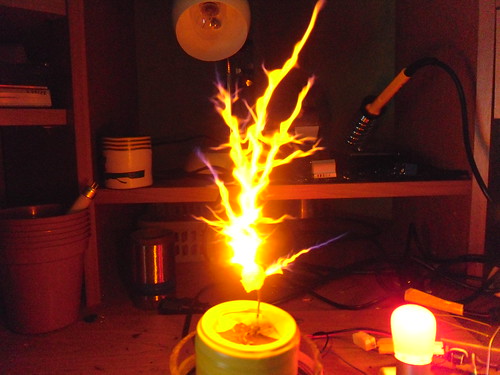D
Deleted member 49011
Guest
Hi ,
yeah my main problem is i made the primary from the only form i had witch is to small so the gap between the secondary and primary is small aswell so i will have to remake and re tune for a larger diamiter primary to stop flash overs . ceramic would be the best materia to use .
Also need to size the grid reistor better as i burnd one out from running at full power too long
yeah ill find a 800V Mosfet and place that in the cathode - ground connection to modulate coil . Thanks
yeah my main problem is i made the primary from the only form i had witch is to small so the gap between the secondary and primary is small aswell so i will have to remake and re tune for a larger diamiter primary to stop flash overs . ceramic would be the best materia to use .
Also need to size the grid reistor better as i burnd one out from running at full power too long
yeah ill find a 800V Mosfet and place that in the cathode - ground connection to modulate coil . Thanks
Last edited by a moderator:







